We've all been in a yoga class where the teacher demonstrated an advanced pose, making it look elegant and effortless. But when we tried it, our body said, “No way, that's not gonna happen!” The fact is, your teacher has been practicing the right yoga poses to improve flexibility, and in this article, you’re going to learn some of the best yoga poses that help with stiffness and increase mobility.
After reading this article, you will have a much better understanding of the mechanics of yoga for flexibility. Keep reading because I'm sharing my experience as a certified yoga teacher of 5+ years, revealing how different styles of yoga help to increase flexibility by stretching both the muscle and the fascia and ligaments and the best styles to practice if improved mobility is your goal.
Read on for my top tips and recommendations!
Article content:
(Click any link below to jump directly to section)
14 best yoga poses to increase flexibility
How long does it take to become more flexible from yoga?
The best styles of yoga to practice to improve flexibility
Yoga vs. stretching
Takeaway on the best yoga poses to improve flexibility
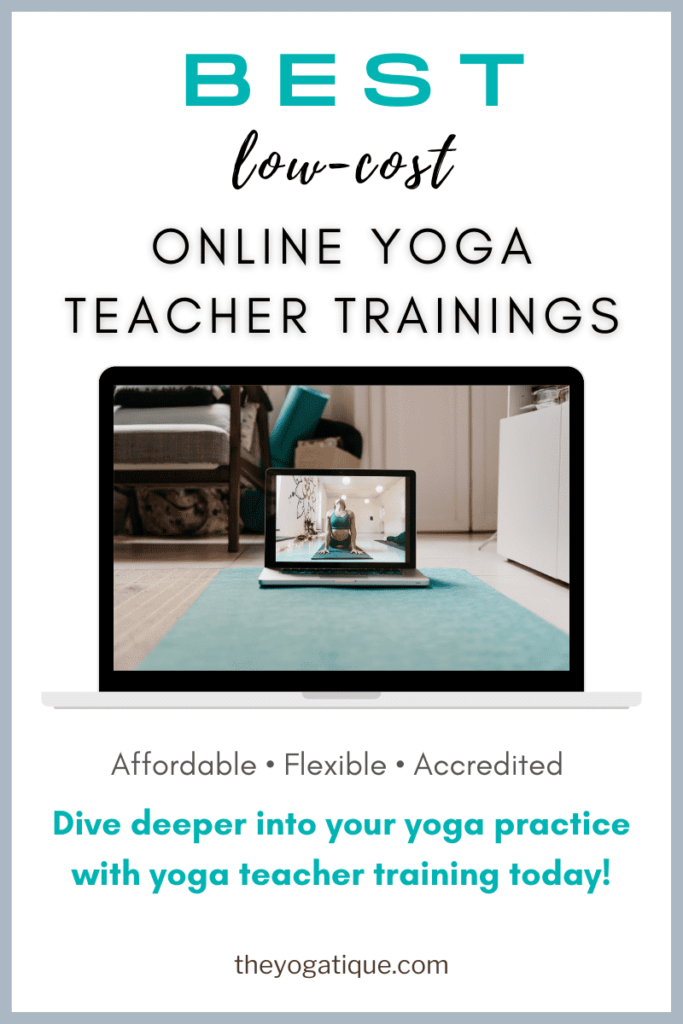
ARE YOU CURIOUS ABOUT YOGA TEACHER TRAINING?!
Online Yoga Teacher Training Offers
- Affordability
- Flexibility
- Certification
- Lifetime access
⬇Click below to discover the best Yoga Alliance registered online YTT's that are under $500⬇
14 best yoga poses to increase flexibility
Flexibility is a key component of overall physical health, contributing to better posture, reduced muscle tension, and a greater range of motion. Yoga, with its emphasis on stretching and mindful movement, is an excellent way to enhance flexibility. Here are fourteen yoga poses that I recommend to improve flexibility:
- Downward facing dog
- Pyramid pose
- Reclined leg stretch
- Low lunge
- Butterfly pose
- Reclined figure four
- Cat/Cow
- Triangle pose
- Bow pose
- Wheel pose
- Splits pose
- King pigeon
- Full lotus
- Forward fold
1. Downward facing dog
Downward facing dog is a great asana to warm up and relieve tension in the hamstrings and calves.
You may find it beneficial to “walk the dog” by bending one knee and straightening the other for 10 to 12 repetitions before holding the pose for 5 to 10 breaths.
Downward dog is also great for building strength.
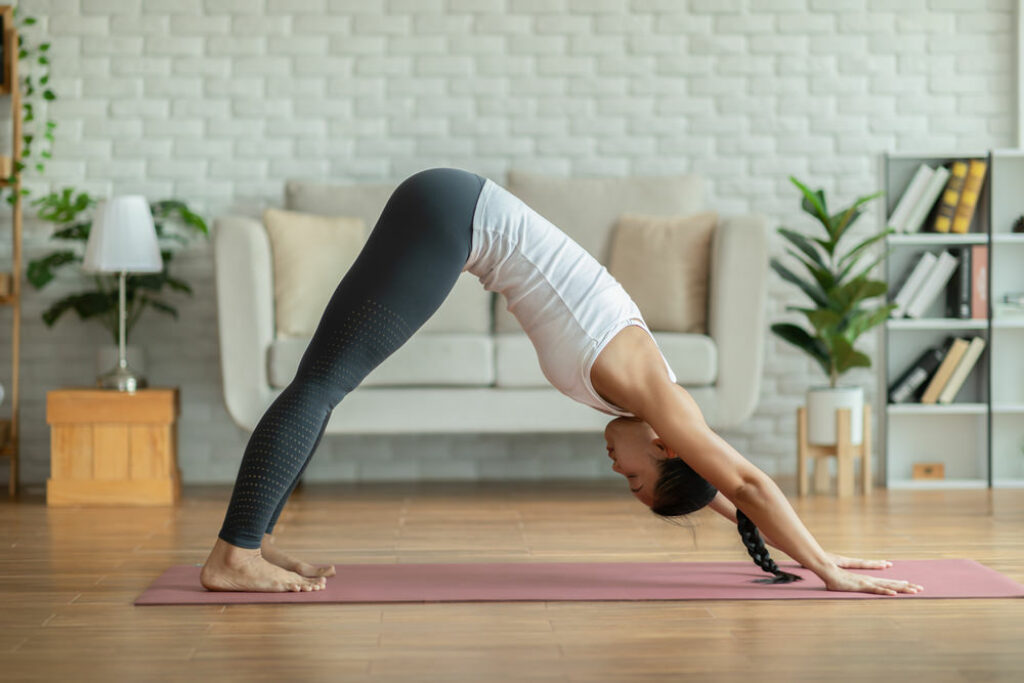
2. Pyramid pose
Pyramid pose is a standing posture that offers a nice deep stretch to the front hamstring and a gentle stretch to the back leg.
If you can't straighten the front leg, keep a slight bend in the front knee. Moreover, if you cannot reach the floor with your fingers, place yoga blocks on either side of the foot to rest your hands.
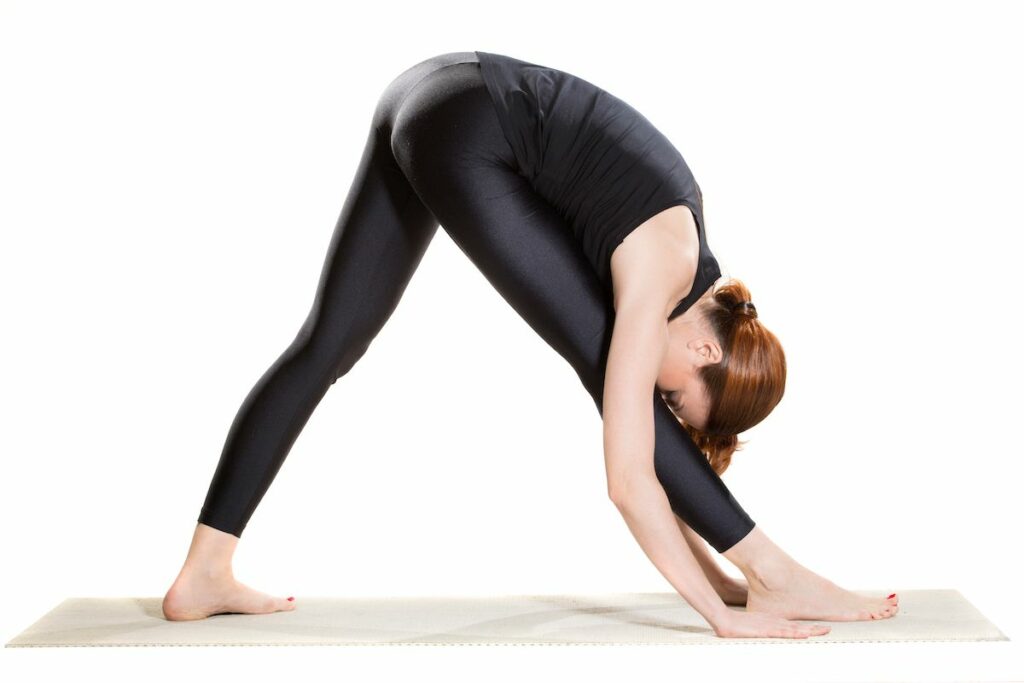
3. Reclined leg stretch
Using a strap, this pose allows you to gently pull the leg towards you, deepening the stretch in the hamstring of the looped leg as much as your body allows. Take long, full breaths, going deeper on the exhale.
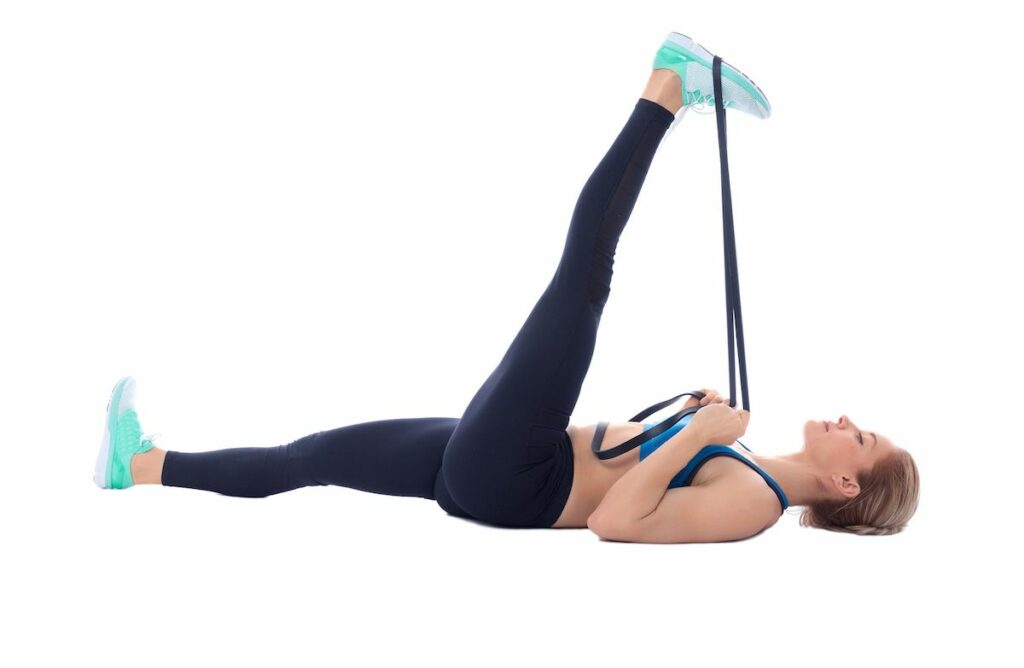
4. Low lunge
Low lunge is an amazing hip flexor pose and a chest-opening pose. By reaching your arms overhead, you can also get a nice spine stretch.
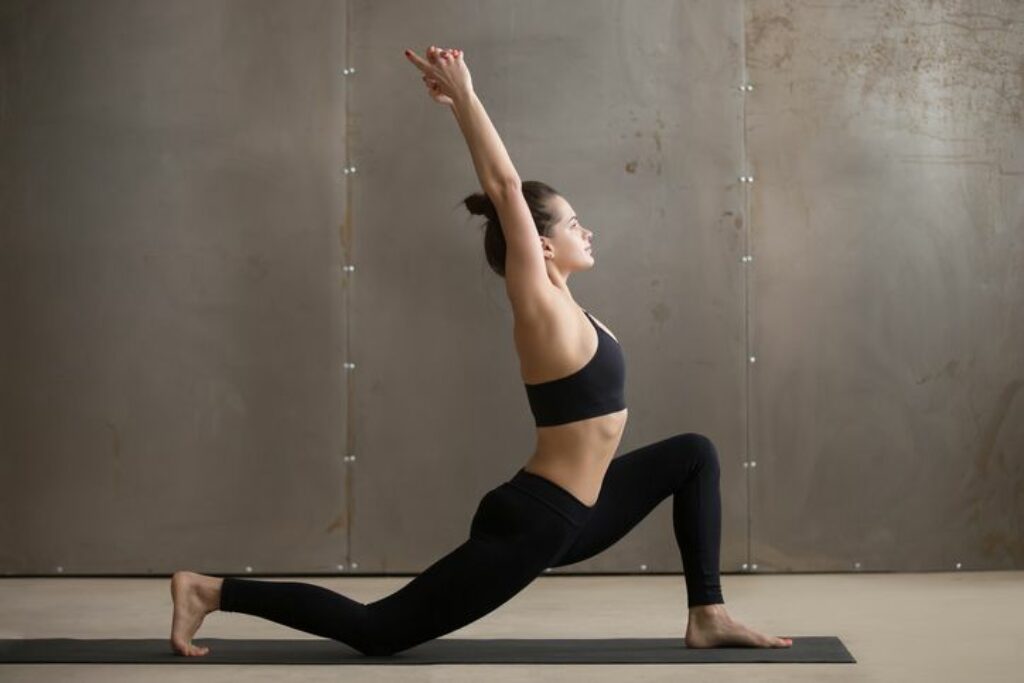
5. Butterfly pose
This seated yoga pose is a wonderful stretch for the groin. The closer you place your feet to your body, the more intense the stretch, so I recommend creating a diamond shape.
Rock the knees up and down 8 to 10 times to loosen the muscles, then rest the knees on blocks as you hold for 5 to 10 breaths.
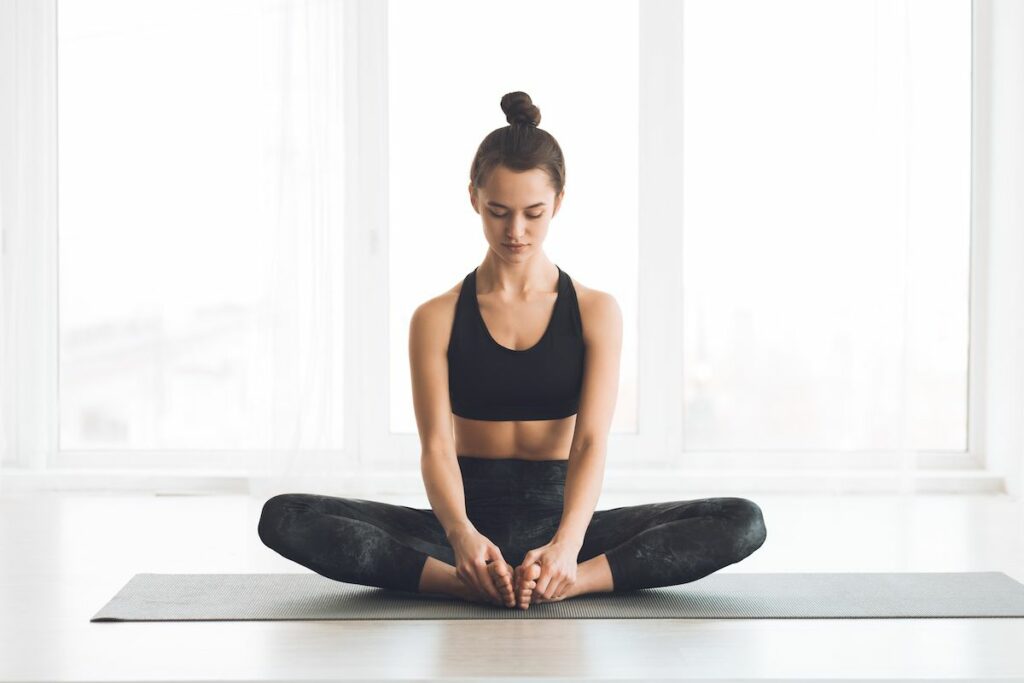
6. Reclined figure four
This supine hip stretch is a gentler alternative to the popular but sometimes challenging pigeon pose. It targets the same muscles as the pigeon pose, including the glutes and piriformis, but allows you to choose the intensity your body can handle.
If tightness makes it difficult to clasp your hand around the back of the thigh in this pose, use a yoga strap instead.
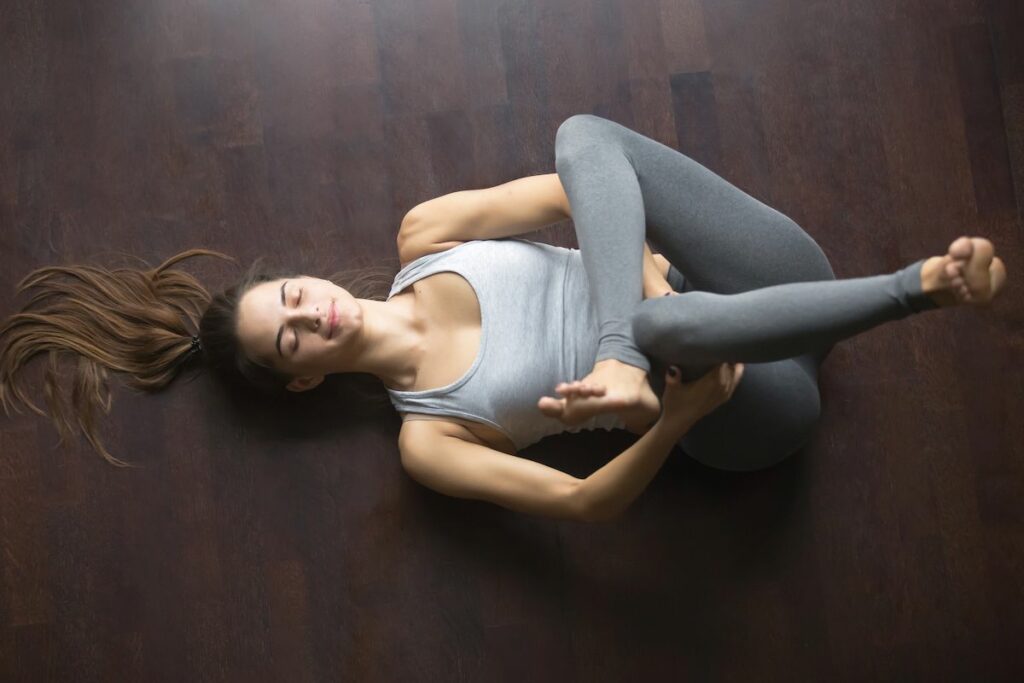
7. Cat/Cow
Cat/cow are great for improving spinal mobility. Alternate between the two for increased spinal flexion.
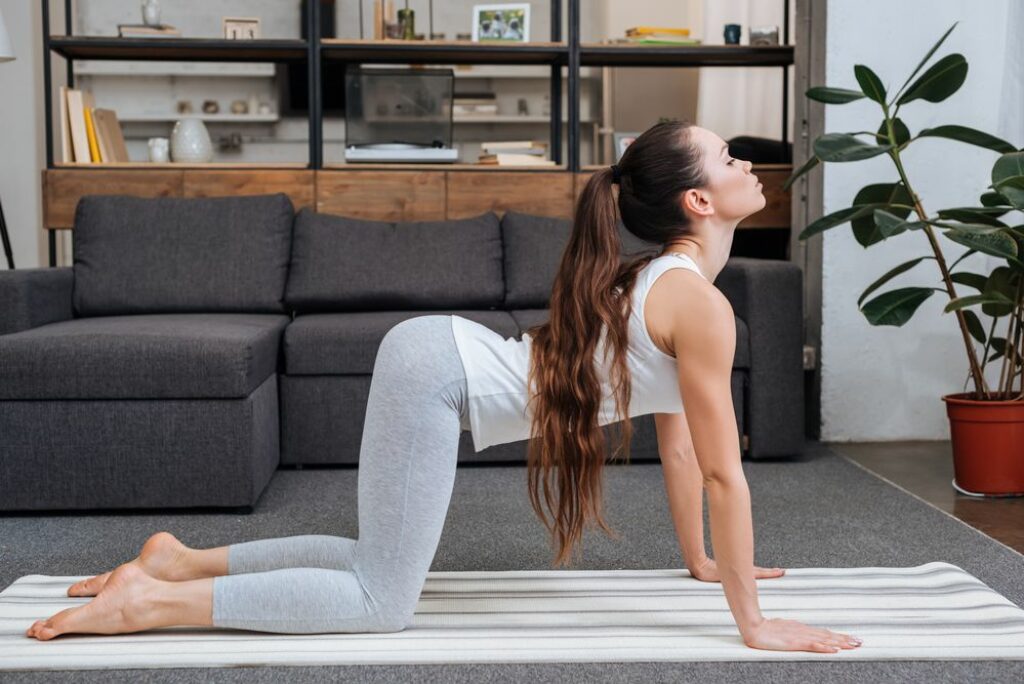
8. Triangle pose
Triangle pose is a great side-body stretch that creates lateral flexion (side body stretch) and activates the core muscles to improve balance and stability.
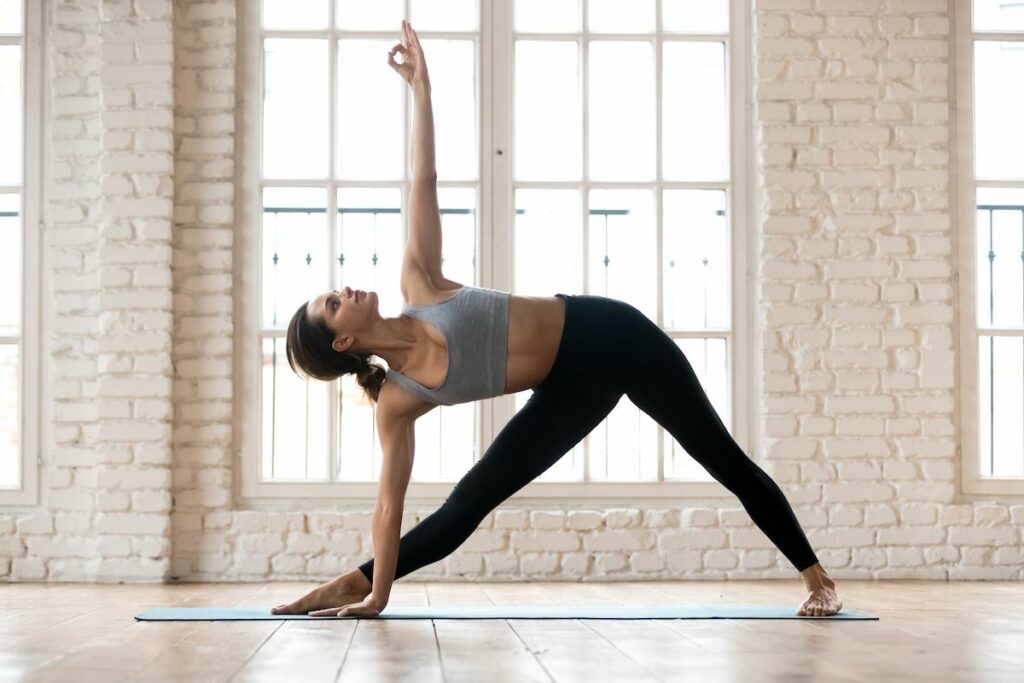
9. Bow pose
Bow pose improves mobility in the shoulders, spine, and hips by stretching and strengthening many different muscles. Thus, it is one of the best intermediate asanas for full-body flexibility.
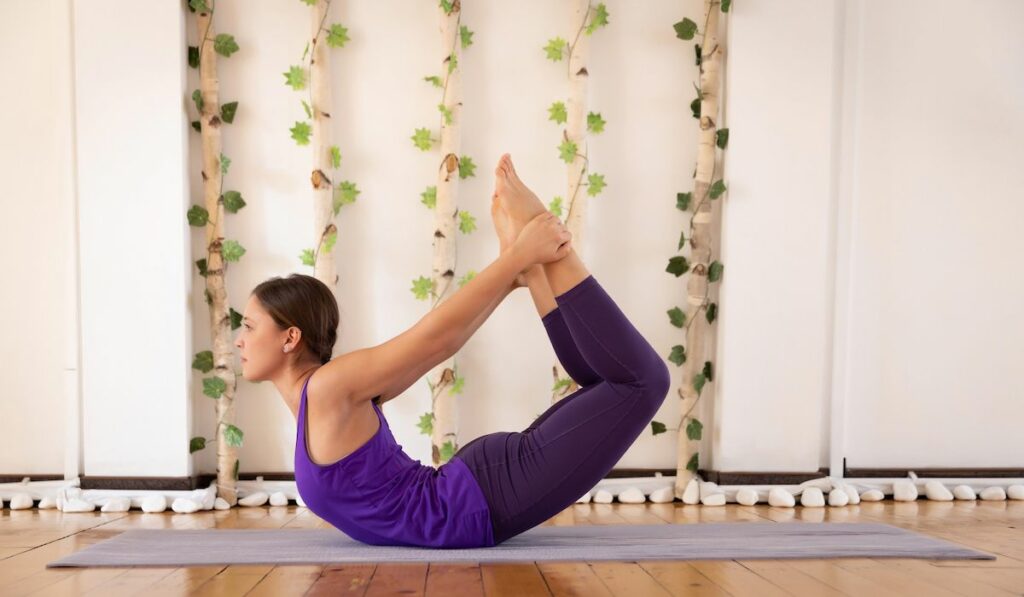
10. Wheel pose
Wheel is an advanced backend that works spinal and shoulder mobility while strengthening the core, thighs, and arms.
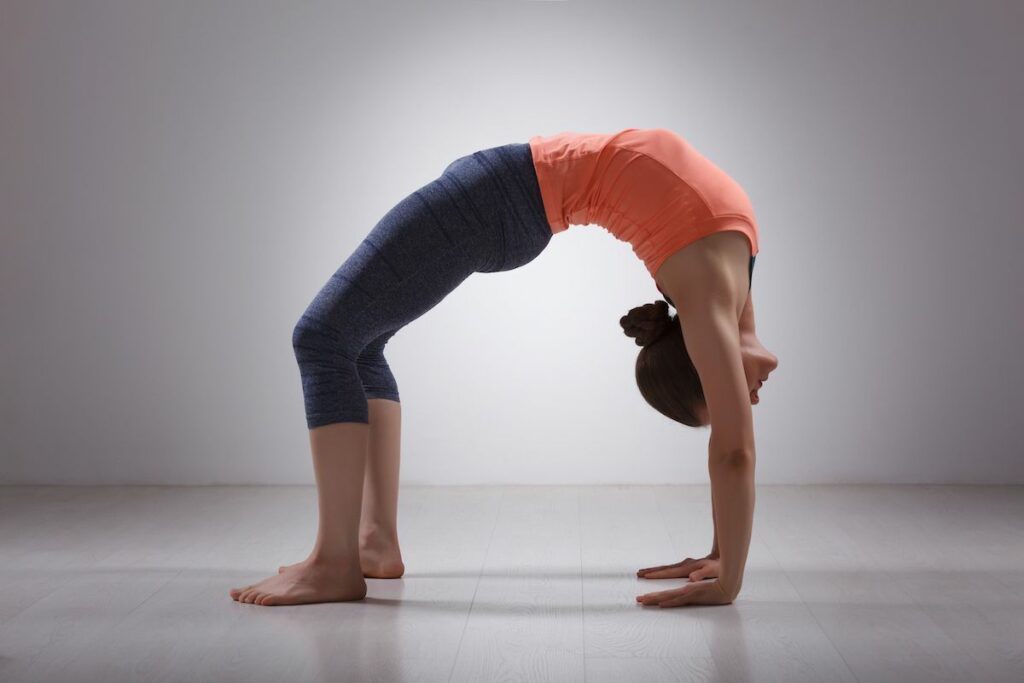
11. Splits pose
There is no better pose to challenge your hip flexibility than the splits! This deep hip opener works many muscles in the lower body, including the hip flexors, adductors, hamstrings, glutes, and groin muscles.
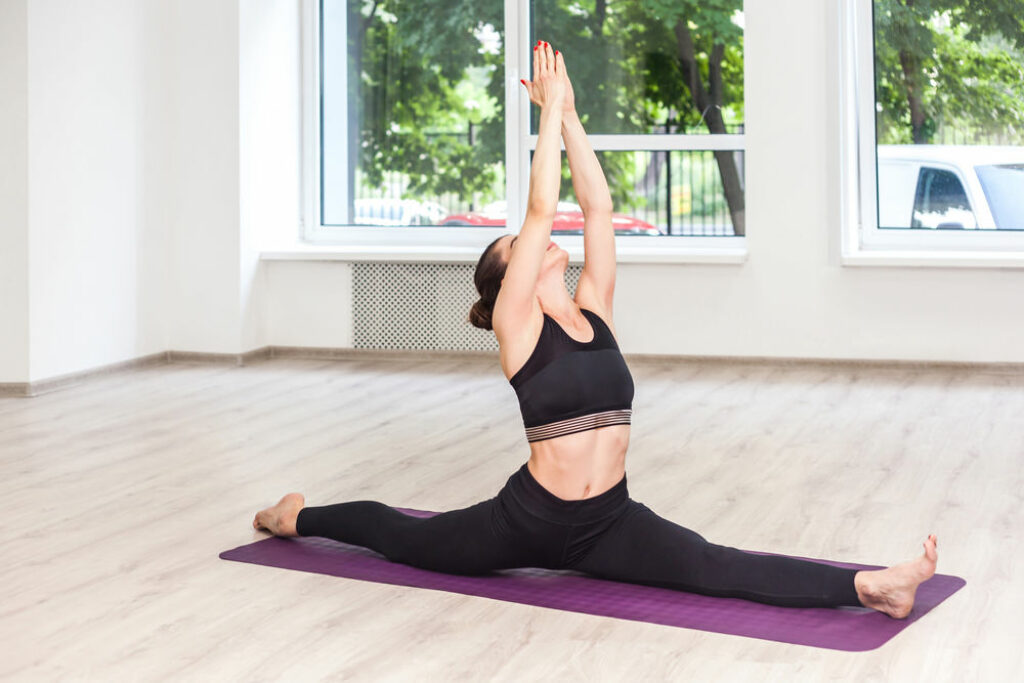
12. King pigeon
Do you love the juicy stretch you get in pigeon pose, but lately, you've noticed it is becoming a bit easy for you? If so, take the pigeon pose to the next level by combining it with a backbend in King pigeon.
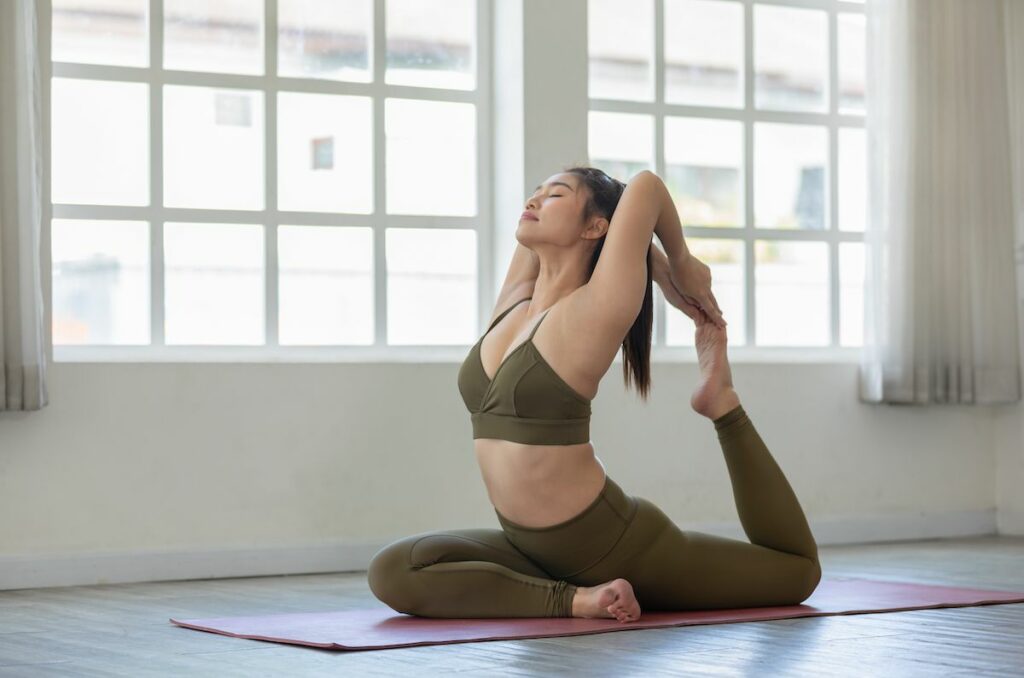
13. Full lotus pose
For many people, full lotus is one of the most challenging asanas. This is because it is not just about muscle flexibility but also the mobility of the hip and knee joints. Therefore, not everyone has the bone structure to achieve the proper alignment of this pose.
Still, yogis with good mobility can often execute this classic asana. Just be sure to practice it towards the end of your yoga class when your muscles are warm.
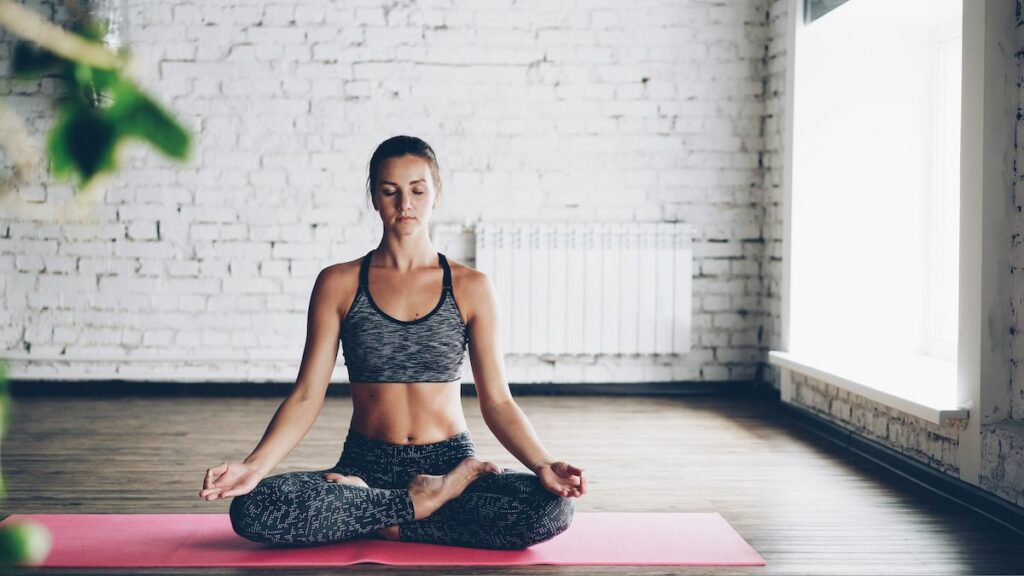
14. Forward fold
Introspective poses like forward bends relieve stress, promote body awareness, and improve blood flow and are great for the spine.
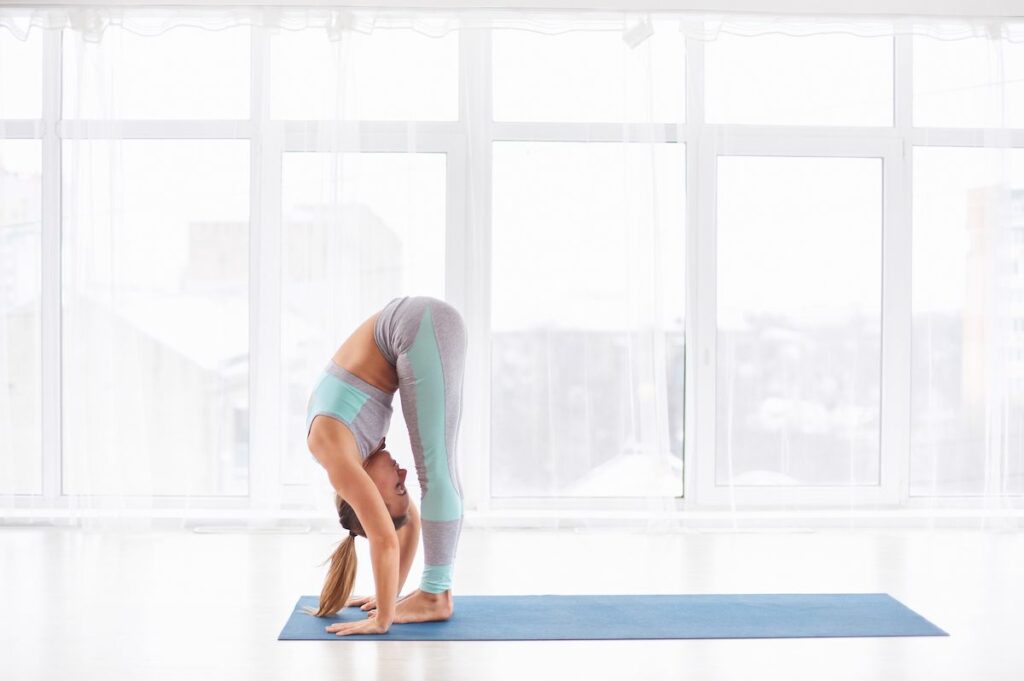
How long it takes to become more flexible from practicing yoga?
If you're wondering how long it takes to become more flexible from practicing yoga, the good news is you don't have to wait years to see results.
Several studies have looked into how long it takes to get flexible. One study published in the Journal of Exercise Sports & Orthopedics tracked the progress of a group of older adults (between 67 and 80) following a flexibility training program five times per week. The researchers recorded increased mobility in ALL participants after three weeks.
My experience as a certified yoga instructor supports the findings of the study referenced above. Most of my beginner students can observe improvements in their range of motion within two to four weeks of consistently practicing yoga.
However, it's important to note that our genetics and body structure determine our “flexibility limit.” So you may find you cannot become as flexible as you would like, no matter how much you practice.
Best styles of yoga to improve flexibility
To access a deeper range of motion, I recommend practicing both Yin and Yang styles of yoga. Here's how Yin and Yang styles of yoga are different
- Yin style: passive style of yoga that stretches deep connective tissue like fascia, tendons, and ligaments.
- Yang style: Predominantly stretchs the muscles.
Difference between yoga and stretching
Dynamic yoga styles like Hatha, Vinyasa, and Ashtanga include a mix of static and dynamic stretching, whereas stretching is static.
- Yoga classes: dynamic movement.
- Stretching classes: static movement.
Takeaway on the best yoga poses to improve flexibility
Whether you're a beginner or a pro, yoga is a fun and effective way to improve muscle flexibility and joint mobility. As many of us now work online, yoga for flexibility helps counteract the muscular tension and tightness this lifestyle causes while also enhancing our overall health.
- Best yoga poses that focus on glutes
- Best yoga pose to build strength
- Best yoga poses for digestion
- Best yoga poses to build stronger legs
Some online yoga studios, online yoga teacher training programs, and brands that we write about may offer us a small percentage should you decide to purchase after reading our content. Thank you for enabling us to exist!









